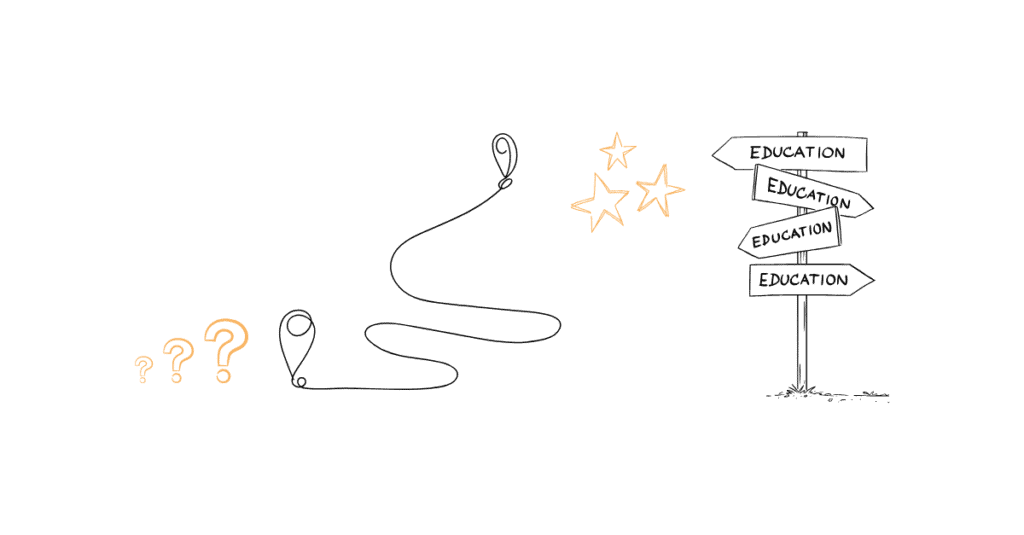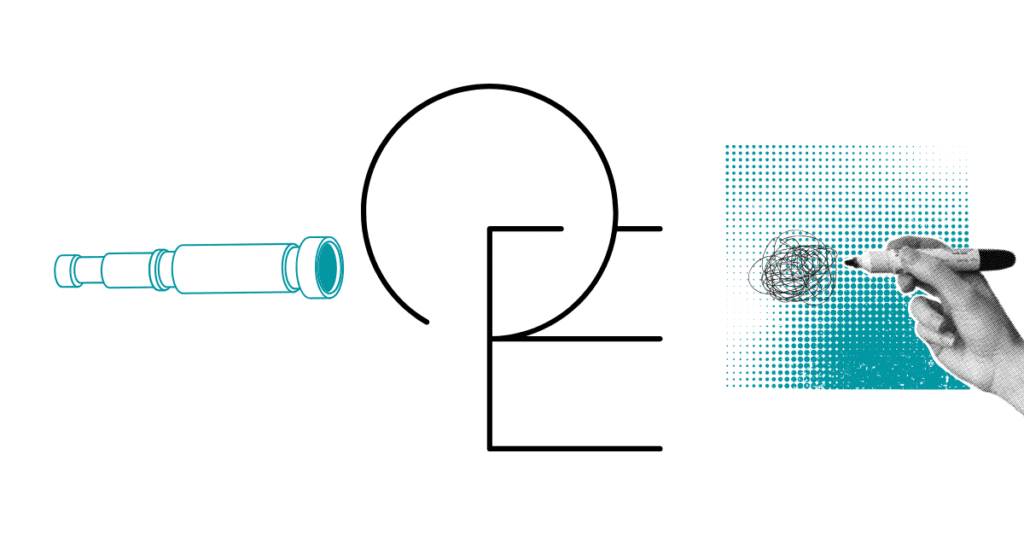What is the Dialogical Principle? Again and again, customers and colleagues ask me this question, so I am writing this short introduction for them as well.
Dialogue means exchange and is thus a form of conversation between two or more people.
Dialogue, however, is not only the description of a form of communication that is distinct from monologue or discussion and presupposes several partners in conversation, but also expresses an attitude in which the partners in conversation consciously turn towards each other in speech and counter-speech. In this context, attitude describes the inner mindset that forms a person’s thoughts and actions.
It is my – and presumably also your – personal experience that people evaluate, classify and filter perceptions differently. This happens unconsciously and is determined by conditioning, experiences and convictions. In a way, we wear different glasses through which we look at the world. What we see (or smell, hear, taste, feel) we consider to be ‘right’ or the ‘truth’, but our interpretations have already passed through filters.
Perception and interpretation seem to take place in one process, but they are two separate mental processes: opposite me I see a male person with folded arms and a slightly tilted head. I interpret this posture as dismissive or mocking (negative) – or as concentrated and turned towards me (positive). It depends on what experiences I unconsciously associate this posture with. And depending on that, I will react and continue to behave towards this person: in defensiveness, mistrust or in friendly openness.
Do you remember your last meeting? Regardless of how that conversation went: were you aware that all perceptions – every sentence, every gesture, every facial expression – went through your unconscious filters? Probably not. You may have been surprised afterwards that some sentences provoked a strong emotional reaction in you or others. However, the underlying interpretation usually remains unconscious and hidden.
In this kind of conversation, the partners often work on what divides them. They try to defend the interpretation of the world that they believe to be the true one. They argue, convince, persuade or fight. This kind of conversation is fast. And not dialogue.
To make dialogue possible, conversational partners become aware of their subjective perceptions and interpretations (constructed realities), are able to detach from them, reduce the pace, cultivate listening and begin what William Isaacs described as “thinking together”.
Dialogue thus takes place when people, among other things:
meet with the intention to understand each other
familiarise themselves with each other’s reality and recognise that there are contradictions
are aware that they interpret reality differently and have created different worlds for themselves
see dialogue as the search for the new and the discovery of what is common, not as mutual counter-proofing, defence, demarcation or rejection
In dialogue, foreign perspectives – or realities – do not threaten one’s own reality, but expand it and are welcomed.
They are the essence of dialogue, for together the bigger picture emerges which the conversation partners seek.
Dialogue is thus universal and not bound to a specific context. It can take place in all areas of society, economy, politics or culture. The only prerequisites are those mentioned above.
The philosophical view
I have already described that ‘dialogue’ is more than just a conversation between people and pointed out some of the roots of dialogue. In his great work ‘I and Thou’, Martin Buber examines the dialogical principle and approaches it in the description of so-called basic words:
“To man the world is twofold, in accordance with his twofold attitude.
The attitude of man is twofold, in accordance with the twofold nature of the primary words which he speaks.
The primary words are not isolated words, but combined words.
The one primary word is the combination I-Thou.
The other primary word is the combination I-It; wherein, without a change in the primary word, one
of the words He and She can replace It.”
In these basic words, he distinguishes between two fundamental and mutually exclusive qualities of the encounter: he contrasts the I-Thou – the dialogical – with the I-It.
With the I-It, the space of dialogue does not open up. The person opposite me remains an object and I do not relate him to me. A lively, friendly, honest and open conversation may arise, but my I is so limited that it does not touch the boundary of the You. It is such an ordinary state that we are not even aware of it.
During the dialogue, my attentiveness is not exclusively focused on the person opposite, but also includes me. This means: I turn towards you AND me. Dialogue is therefore the conscious integration of I and you – and of the common space in which the encounter takes place. In this encounter, the person opposite becomes unique and recognizes my uniqueness. I myself become the person who “appears by entering into relationship with other persons”.
Or in succinct brevity: “The human becomes I at the YOU”.
This needs to be practized, but it releases new potential: in dialogue not only arguments, i.e. content on a cognitive level, are exchanged, but also resonances are communicated. In dialogue, there is a place for the sensation or emotion with which I react to what I hear. Every communication event is a reaction to the communication event before. That means we are constantly reacting to each other. Complicated? Don’t try to understand this with your mind. Consider for a moment what resonance this creates in you.
Dialogue is precious but rare. It may be cultivated, then it comes more often. Yet it is clear that we have not learnt dialogue in our traditional institutions.
Summary:
Dialogue requires two things. First, a framework in which communicators are aware of their constructed realities and develop a form to deal with them fruitfully. Secondly, the will for an I-Thou contact, which arises in presence and in which the resonance with each other itself becomes part of the exchange.
Dialogue in organizations
For an organization to function, formal and informal processes of communication and collaboration must be maintained. Whether individual conversations, meetings or conferences – everywhere people meet, exchange information and work together.
But here too, communication between a group of people does not automatically lead to dialogue. This only succeeds when the framework conditions for it are consciously created, when the dialogue principle becomes a new principle also in leadership and leaders refer to the conditions already mentioned above. The goal of this leadership is a culture in which people think together.
Another important purpose of communication in companies is to mark status:
Not everyone is allowed to talk to everyone.
Not everyone is allowed to talk about the same things.
That seems absurd to you? If communication events create resonance in us, but we are prevented – by status, role or cultural taboos – from using these resonances constructively, then we are prevented from developing our potential.
How many ideas are not expressed? How many solutions to conflicts or problems are not utilized? How much power remains blocked with status games?
Now imagine a culture where people consciously turn to each other. In which leaders are able to unmask their status games, develop their personality and redesign their role. A culture in which the new emerges in dialogue, in which all people are invited to develop their potential. The dialogical principle in its practical as well as philosophical consideration – and above all in experience – becomes the reference point for a new culture in leadership and organization.
The dialogical principle and the dialogical leadership developed from it are not only a style of leadership, but describe an attitude in which people meet other people in an authentic, fresh, lively and holistic way. It creates the basis for a new paradigm in a dynamic, uncertain and complex environment.
The dialogical principle is also the basis of all trainings for leaders and our basic approach in all forms of organizational development. Scientifically, dialogical organizational development distinguishes itself from so-called diagnostic organizational development and is the foundation of our work.
Read more:
“I and You” (Martin Buber, 1923)
“Dialogue: The Art of Thinking Together” (William Isaacs, 1999)









